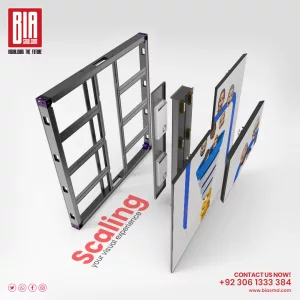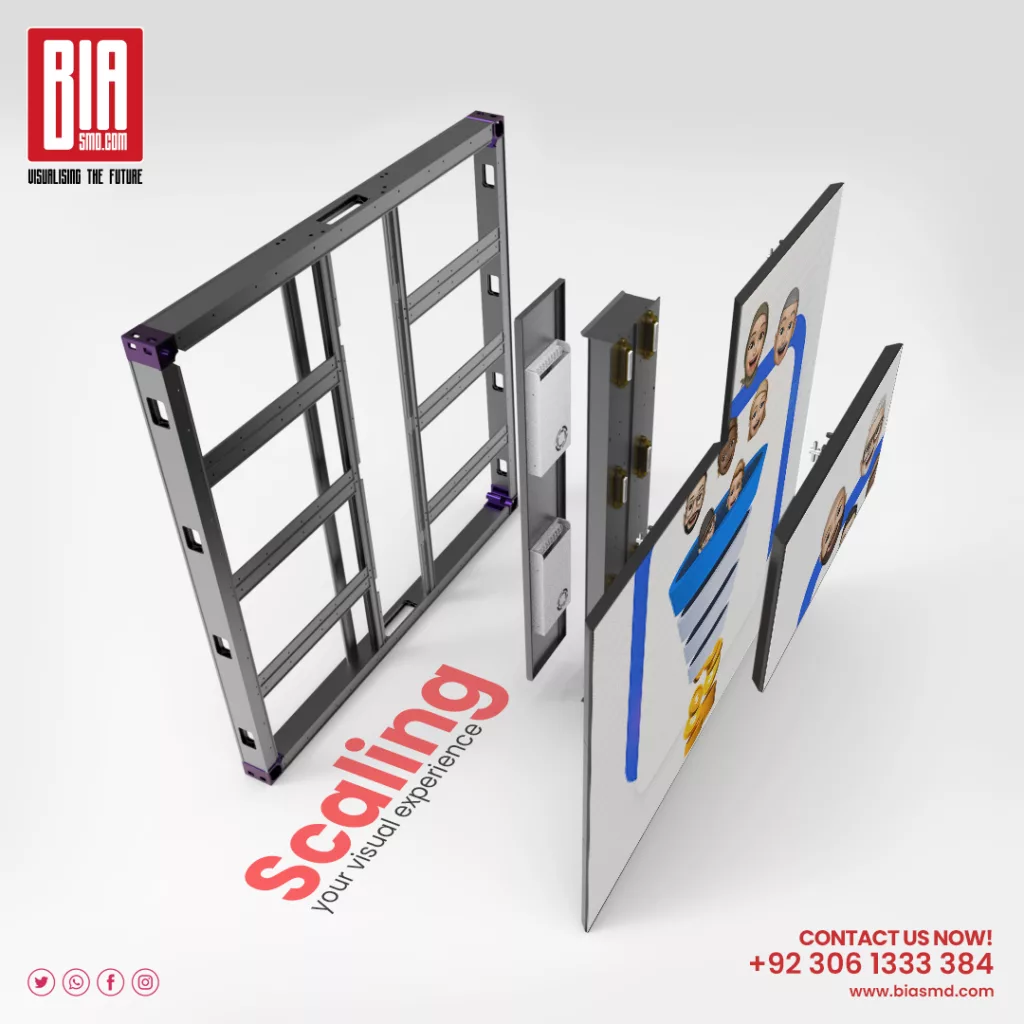Innovations in SMD Screen Types: Thin and Flexible Displays

Introduction
The world of screen technology is advancing at a breakneck pace, and one of the most exciting developments is the innovation in Surface-Mounted Device (SMD) screens. From their humble beginnings to the cutting-edge designs we see today, SMD screens have revolutionized the way we interact with digital displays. Innovations in SMD screen design, particularly the rise of thin and flexible displays, are paving the way for new possibilities in various industries, from consumer electronics to automotive applications. This article will explore these innovations, with a particular focus on the different SMD screen types that are shaping the future of display technology.
Understanding SMD Screen Technology
What are SMD Screens?
Surface-Mounted Device (SMD) technology refers to electronic components that are mounted directly onto the surface of printed circuit boards (PCBs). This technology has been a game-changer in electronics, allowing for smaller, more compact devices. SMD screens, which utilize this technology, are known for their high resolution, vibrant colors, and energy efficiency. Historically, screen technology has evolved from bulky cathode-ray tubes (CRTs) to sleek, flat-panel displays, and SMD screens represent the next step in this evolution.
Key Features of SMD Screens
SMD screens are celebrated for their compact size and lightweight design, making them ideal for a wide range of applications. Their ability to deliver high-resolution images with vibrant colors and excellent contrast has made them a favorite in industries where visual clarity is paramount. Additionally, SMD screens are known for their energy efficiency, which is crucial in portable devices where battery life is a key concern.
SMD Screen Types: A Closer Look
Different Types of SMD Screens
When discussing SMD screens, it’s essential to recognize the various types available, each suited to different applications:
- SMD LED Screens: These screens use light-emitting diodes as their primary light source. SMD LEDs are renowned for their brightness and energy efficiency, making them ideal for both indoor and outdoor displays.
- SMD LCD Screens: Liquid Crystal Displays (LCDs) utilizing SMD technology offer excellent image quality and are widely used in devices such as smartphones, tablets, and televisions.
- SMD OLED Screens: Organic Light-Emitting Diode (OLED) screens represent the pinnacle of display technology. They provide unmatched contrast ratios, true blacks, and wide viewing angles, making them the choice for premium devices.
Advantages of SMD Screens
SMD screens offer several advantages over traditional display technologies. Their versatility allows them to be used in a wide range of devices, from small wearable gadgets to large digital billboards. Moreover, SMD screens are highly durable and energy-efficient, ensuring they can withstand the rigors of everyday use while consuming minimal power.
Innovations in SMD Screen Types
The Rise of Thin Displays
One of the most significant innovations in SMD screen design is the development of thin displays. These ultra-slim screens are transforming the way devices are designed, enabling sleeker, more aesthetically pleasing products. Thin SMD screens are particularly popular in the consumer electronics market, where the demand for lightweight, portable devices continues to grow. Whether in smartphones, laptops, or televisions, thin screens are now a key selling point, offering both functional and visual appeal.
Flexible Displays: The Future of SMD Screens
Another groundbreaking innovation in SMD screen design is the advent of flexible displays. Unlike traditional rigid screens, flexible displays can bend, fold, or even roll, opening up a world of new possibilities. This flexibility is achieved through the use of advanced materials and manufacturing processes that allow the screen to maintain its functionality even when bent or folded. Flexible displays are already being used in foldable smartphones, wearable devices, and other cutting-edge products, and their impact on design and usability cannot be overstated.
Technologies Behind Thin and Flexible SMD Displays
Advancements in Materials
The development of thin and flexible SMD screens has been driven by significant advancements in materials science. New materials, such as organic compounds and polymers, have enabled the creation of screens that are not only thinner but also more flexible. These materials are crucial in maintaining the integrity and durability of the screens while allowing for the desired flexibility. Additionally, advancements in transparent conductive materials, such as graphene and indium tin oxide (ITO), have played a vital role in the development of flexible displays.
Innovations in Manufacturing Processes
To produce thin and flexible SMD screens, manufacturers have had to adopt new techniques, such as microfabrication and nanotechnology. These processes involve manipulating materials at a microscopic level to achieve the desired thinness and flexibility. Laser-assisted fabrication techniques have also become increasingly important, allowing for precise cutting and shaping of materials without damaging the delicate components of the screen. These innovations in manufacturing have made it possible to mass-produce thin and flexible displays, bringing them to a broader market.
Applications of Thin and Flexible SMD Screens
Wearable Technology
The rise of thin and flexible SMD screens has had a significant impact on wearable technology. Smartwatches, fitness bands, and health monitoring devices all benefit from the compact and flexible nature of these screens. For instance, a smartwatch with a flexible display can wrap around the wrist more comfortably, offering users a seamless experience. Moreover, the lightweight design of SMD screens ensures that wearables remain comfortable to use throughout the day.
Mobile Devices
In the mobile device market, the introduction of foldable and rollable screens represents one of the most exciting innovations. Smartphones and tablets with these screens offer a unique combination of portability and expansive display size. Users can fold their devices for easy storage and then unfold them when they need a larger screen. This innovation is particularly appealing in a world where multitasking and media consumption on mobile devices are on the rise.
Automotive Industry
The automotive industry is another sector where thin and flexible SMD screens are making waves. Digital dashboards and Heads-Up Displays (HUDs) are increasingly incorporating these screens to provide drivers with critical information in a sleek, modern format. Flexible displays can be seamlessly integrated into the curved surfaces of a car’s interior, enhancing both the aesthetics and functionality of the vehicle. As cars become more technologically advanced, the demand for high-quality SMD screens in the automotive industry is expected to grow.
Consumer Electronics and Beyond
Beyond wearables and mobile devices, thin and flexible SMD screens are finding applications in a wide range of consumer electronics. Televisions, laptops, and gaming consoles are all benefiting from the advancements in screen technology, offering users better visual experiences. Additionally, these screens have potential applications in smart home devices, such as smart mirrors and interactive displays, where their flexibility and thinness can be used to create innovative designs.
Challenges and Considerations in SMD Screen Design
Durability Concerns
While thin and flexible SMD screens offer many advantages, they also present challenges, particularly in terms of durability. These screens are often more delicate than their rigid counterparts, making them more susceptible to damage from drops, scratches, and other impacts. Manufacturers are actively working on solutions to enhance the robustness of these screens, such as using protective coatings and reinforcing the materials used in their construction.
Cost and Manufacturing Challenges
Another challenge in the development of thin and flexible SMD screens is the cost. The advanced materials and manufacturing processes required to produce these screens can be expensive, making the final product more costly. Additionally, scaling production to meet mass-market demand presents its own set of challenges. However, as technology continues to evolve, these costs are expected to decrease, making thin and flexible SMD screens more accessible to a broader audience.
The Future of SMD Screen Types
Emerging Trends in SMD Screen Design
As we look to the future, several emerging trends in SMD screen design are worth noting. Transparent and stretchable screens are currently in development, offering the potential for even more innovative applications. For example, stretchable screens could be used in clothing or other flexible surfaces, while transparent screens could revolutionize the way we interact with our environments, creating interactive glass surfaces and other futuristic interfaces.
What Lies Ahead?
The next decade promises to be an exciting time for SMD screen technology. As innovations continue to emerge, we can expect to see even more advanced screen designs that push the boundaries of what is possible. SMD screens will likely play a critical role in shaping future technologies, from augmented reality (AR) to the Internet of Things (IoT), where their versatility and adaptability will be crucial.
Conclusion
In conclusion, the innovations in SMD screen design, particularly the development of thin and flexible displays, are transforming the world of digital displays. These advancements are opening up new possibilities across various industries, from wearable technology and mobile devices to automotive applications and beyond. As SMD screen types continue to evolve, they are set to play a pivotal role in the future of technology, offering both functionality and aesthetic appeal. The future of SMD screen technology is bright, and we are only just beginning to see the potential of these incredible innovations.
FAQs
What does SMD stand for in screen technology?
SMD stands for Surface-Mounted Device, a technology where electronic components are mounted directly onto the surface of printed circuit boards, resulting in compact and efficient screens.
How do SMD screens compare to traditional displays?
SMD screens are generally more compact, energy-efficient, and capable of delivering higher resolution and brighter displays than traditional screen technologies.
Are flexible SMD screens durable?
While flexible SMD screens can be more delicate than rigid screens, advancements in materials and protective technologies are improving their durability.
Where are thin and flexible SMD screens most commonly used?
Thin and flexible SMD screens are commonly used in wearable technology, mobile devices, automotive displays, and a variety of consumer electronics.
What are the future prospects for SMD screen technology?
The future of SMD screen technology includes advancements like transparent and stretchable screens, with potential applications in augmented reality, smart home devices, and more.
Looking for premium SMD screens and professional display solutions? SMDLED.PK is your trusted partner for state-of-the-art SMD technology. Explore our top-quality products like the stunning Leyard HDR 4K SMD Video Wall for crystal-clear visuals, the versatile MSA Plus SMD LED Screen Module, the sleek MSA Ultra Thin SMD LED Screen Module for modern setups, the durable MSG Outdoor SMD LED Screen Module, and the efficient MSG Indoor SMD LED Screen Module perfect for indoor environments.
We also offer exceptional Outdoor SMD Screens, Indoor SMD Screens, Flexible SMD Screens for creative designs, Cabinet SMD Screens for secure setups, Signpole SMD Screens for advertising, and stunning SMD Video Walls for large-scale visual impact. With SMDLED.PK, experience reliability, superior technology, and tailored solutions for all your display needs. Visit us today and transform your spaces with unparalleled visual excellence!

